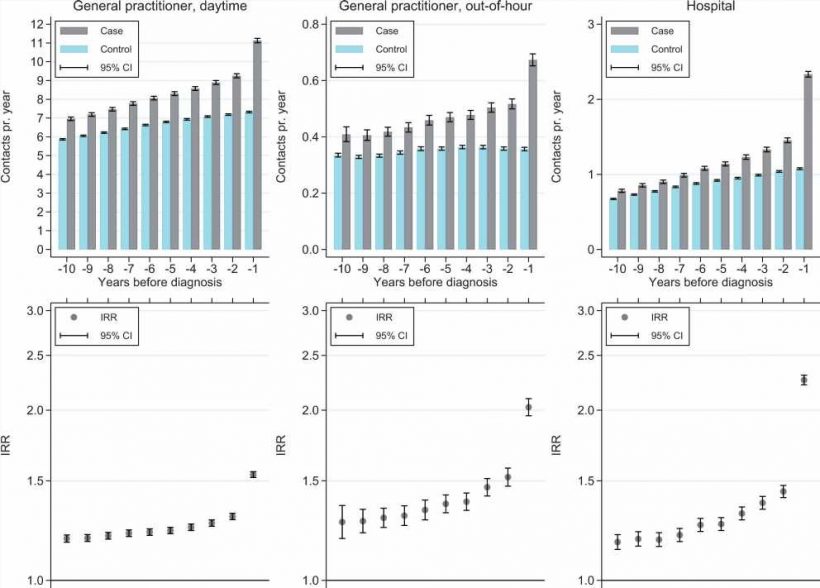
Endometriosis is a chronic—often painful—illness that only affects women. New research shows potential for shortening the path to diagnosis and treatment. In the years prior to being diagnosed with endometriosis, women with the chronic illness have more contact than average with their GP, private gynecologist and the hospital service.
Researchers analyzed 129,696 Danish women’s utilization of the health care sector, with particular focus on the 21,616 women who were diagnosed with endometriosis between 2000 and 2017.
“We can see that even 10 years before being diagnosed, women affected by endometriosis utilize the health care system slightly more, and we can see that the interaction increases in the years leading up to their diagnosis of the illness,” says Ph.D. student Anna Melgaard from the Department of Public Health at Aarhus University. She is the first author of the study, which has just been published in Human Reproduction.
“The study is particularly interesting to women with endometriosis because previous research shows they often experience repeated contact with health care professionals and a feeling of being tossed about the health care system. Our study validates this perception,” says Anna Melgaard.
The study is also interesting for health care professionals who interact with women of childbearing age and who are being passed around the health care sector, she points out:
“This can hopefully help shed light on the fact that women should be referred for further diagnosis sooner.”
Bypassing a years-long process
Endometriosis is an illness associated with long delays in diagnosis. It can take up to ten years from the time a woman first experiences symptoms until she is diagnosed.
There are probably several reasons for this, Anna Melgaard explains:
“Women can find it difficult to distinguish between normal and abnormal symptoms and might therefore not seek medical attention immediately. Doctors may also have insufficient knowledge about endometriosis and can tend to normalize symptoms, which can result in incomplete examinations, inadequate referrals and referrals to the wrong specialist,” she says.
The researchers hope the study can help shed light on the serious consequences of delayed diagnosis—not only for the women affected, but for the health care sector as well, which could use its resources better.
“With this study we can underscore that the delayed diagnosis of endometriosis is not due to the fact that women do not visit the doctor,” says Anna Melgaard.
The researchers are currently following up on the study at the Department of Public Health. The goal is to help health care professionals identify women with endometriosis-like symptoms in order to reduce the time from symptom onset to diagnosis.
“We’re now taking a look at the specific reasons why women contact the health care system. The aim is to identify any contact patterns for patients with undiagnosed endometriosis. This would help women get diagnosed and treated faster—and hopefully avoid spending years adrift in the health care system,” says Anna Melgaard.
More information:
Anna Melgaard et al, Utilization of healthcare prior to endometriosis diagnosis: a Danish case–control study, Human Reproduction (2023). DOI: 10.1093/humrep/dead164
Journal information:
Human Reproduction
Source: Read Full Article
